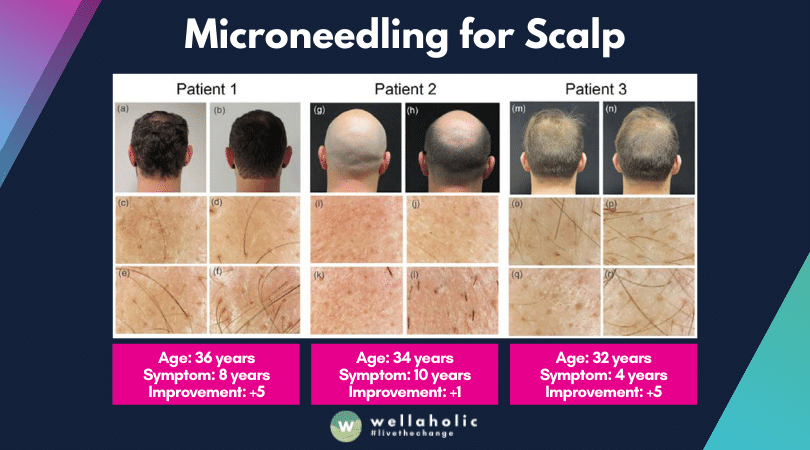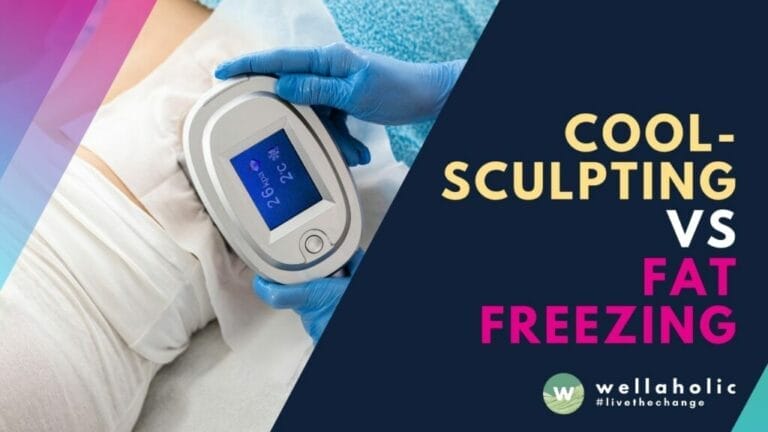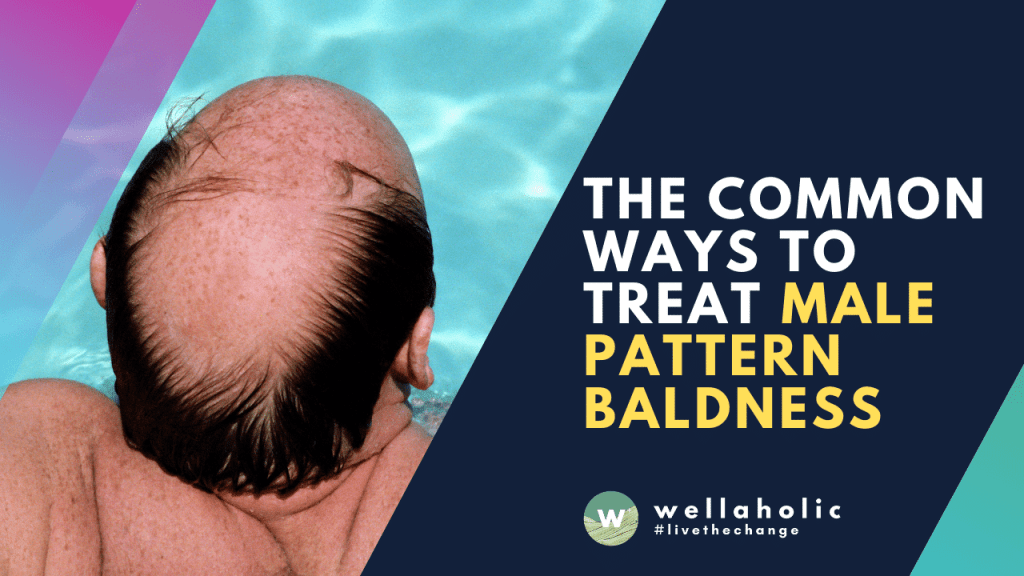
Thinning Hair? Don’t Despair: Options for Treating Male Pattern Baldness
Table of Contents
- 0.1 TL:DR Summary
- 0.2 Introduction: The Common Ways to Treat Male Pattern Baldness
- 0.3 What is Male Pattern Baldness?
- 0.4 What causes Androgenetic Alopecia?
- 0.5 Treating Androgenetic Alopecia
- 0.5.1 1. Finasteride (Propecia, Proscar)
- 0.5.2 What is finasteride and how does it help with hair loss?
- 0.5.3 How should finasteride be taken and what are the expected results?
- 0.5.4 What are the side effects and risks of finasteride?
- 0.5.5 2. Minoxidil
- 0.5.6 What is minoxidil and how does it help with hair loss?
- 0.5.7 How should minoxidil be applied and what are the expected results?
- 0.5.8 What are the side effects and risks of minoxidil?
- 0.5.9 Hair transplant surgery is a popular treatment option for hair loss among Asians. One study compiled by Wellaholic found that the number of hair transplant surgeries performed in Korea increased by 5.5-fold between 2008 and 2012.
- 0.5.10 3. Hair Transplants
- 0.5.11 What is a hair transplant and how does it help with hair loss?
- 0.5.12 How is a hair transplant done and what are the expected results?
- 0.5.13 What are the risks and complications of a hair transplant?
- 0.5.14 4. Low-Level Laser Therapy (LLLT)
- 0.5.15 What is LLLT and how does it help with hair loss?
- 0.5.16 How does LLLT work and what are the devices used?
- 0.5.17 What is the experience of LLLT like at Wellaholic?
- 0.5.18 5. Microneedling
- 0.5.19 Microneedling for Scalp: A New Way to Treat Hair Loss
- 0.5.20 How Microneedling for Scalp Works
- 0.5.21 Microneedling for Scalp with Minoxidil
- 0.6 Wellaholic’s Professional Observations (From Our Customers)
- 0.7 Frequently Asked Questions (FAQ)
- 0.8 Book Now Pay Later
- 0.9 Revolutionise Your Hair Regrowth Journey with Scalp RF Microneedling
- 1 Thinning Hair? Don’t Despair: Comprehensive Guide to Treating Male Pattern Baldness with Effective Techniques and Lifestyle Changes
TL:DR Summary
- Combat Male Pattern Baldness: Learn effective methods to address male pattern baldness and regain confidence.
- Explore Treatment Options: Discover a range of treatments tailored to combat hair loss in men.
- Evidence-Based Solutions: Wellaholic offers scientifically proven techniques to tackle male pattern baldness effectively.
- Advanced Technology: Benefit from cutting-edge technology and specialized treatments for hair restoration and growth.
- Personalized Approach: Wellaholic’s solutions are customized to individual needs, ensuring the best results for each client.
- Confidence Restoration: Regain your hair and confidence with Wellaholic’s comprehensive male pattern baldness treatments.
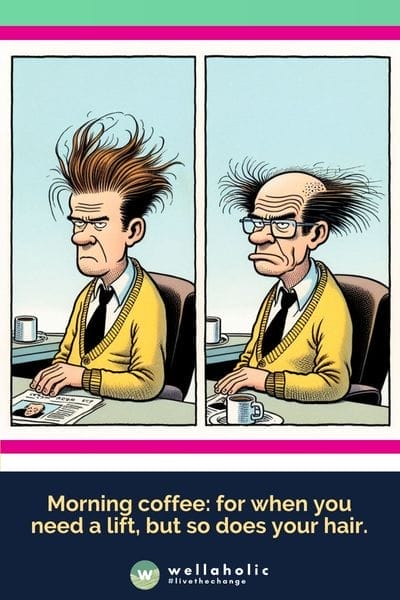
Introduction: The Common Ways to Treat Male Pattern Baldness
As someone deeply entrenched in the aesthetics industry, with years of experience and a CIDESCO certification under my belt, I’ve seen firsthand the impact of aesthetic concerns on individuals’ confidence and self-perception.
One such concern that frequently comes up, especially among men, is male pattern baldness. It’s a condition that’s more common than many realize, and it often carries with it a significant emotional burden.
Whispers to Wisdom: Cracking the Hair Loss Code
In my role, I’ve had the privilege of engaging with a diverse array of clients and industry experts, which has given me a unique perspective on the myriad of treatments and solutions available for thinning hair.
This article aims to shed light on the options for treating male pattern baldness, a topic that, while often discussed in hushed tones, deserves a candid and informative exploration.
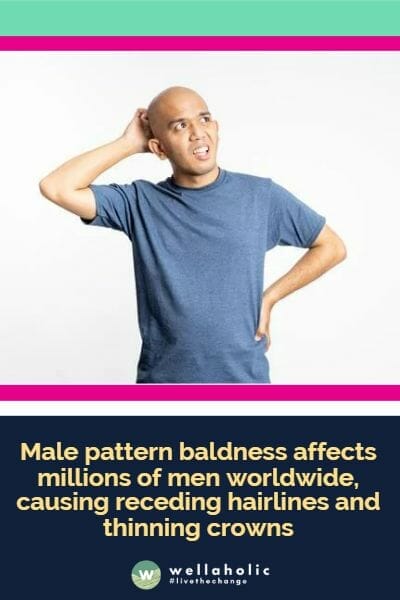
What is Male Pattern Baldness?
What is androgenetic alopecia?
Androgenetic alopecia is a common form of hair loss that affects both men and women. It is also known as pattern baldness or male-pattern baldness (in men) or female-pattern baldness (in women). It is caused by a combination of genetic and hormonal factors that affect the hair follicles.
How does androgenetic alopecia affect the hair growth cycle?
Androgenetic alopecia weakens the hair growth cycle. It causes hair follicles to shrink. This leads to shorter and thinner hair strands. These strands are more likely to fall out. Over time, the hair’s natural growth cycle ends. No new hair grows to replace the ones that are lost. This results in scalp thinning and balding.
What are the signs and patterns of androgenetic alopecia?
Androgenetic alopecia can follow a well-defined pattern that starts from above the temples on the head. As the hairline recedes, it forms the characteristic ‘M’ shape, and the hair thins at the top of the head—the crown.
This is more common in men than in women. Women may experience a more diffuse thinning of the hair all over the scalp, or a widening of the parting line. Androgenetic alopecia can lead to partial or complete baldness in some cases.
“The key to solving hair loss is in your hands – take the steps to find the right solution for you.
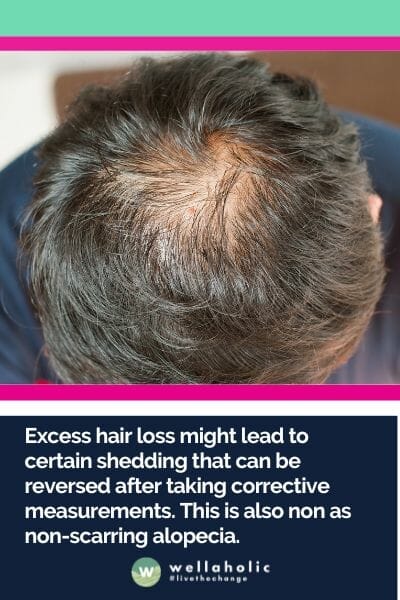
What causes Androgenetic Alopecia?
What causes androgenetic alopecia?
Most of the time, androgenetic alopecia is a genetically predetermined disorder due to an excessive response to androgens. Androgens are a group of hormones that mainly influence the growth and development of the male reproductive system. One example you may be familiar with is testosterone.
How does androgenetic alopecia affect different age groups?
That’s why androgenetic hair loss can occur in early adolescence, because the regression of scalp hair, or baldness, can be influenced by androgens. There are studies that find that there are 16% of men between 18 and 29 year old can experience male pattern baldness.
The prevalence of the condition increases with age: the U.S. National Library of Medicine (NLM), has discovered that over 50 percent of all men over 50 year old will experience some extent of by male pattern baldness.
What are the other factors that can contribute to androgenetic alopecia?
But there are medical conditions and medical treatments that can be serious causes for this condition: cancers, thyroid conditions, anabolic steroids, as well as some medications. Certain health conditions could cause baldness.
When you have unexpected rashes, redness, pain, peeling of the scalp, hair breakage, patchy hair loss, or even an unusual pattern of hair loss accompanies the hair loss, you should go see a doctor, ASAP. Because you might need proper blood tests or a skin biopsy to diagnose the disorders behind the hair loss.
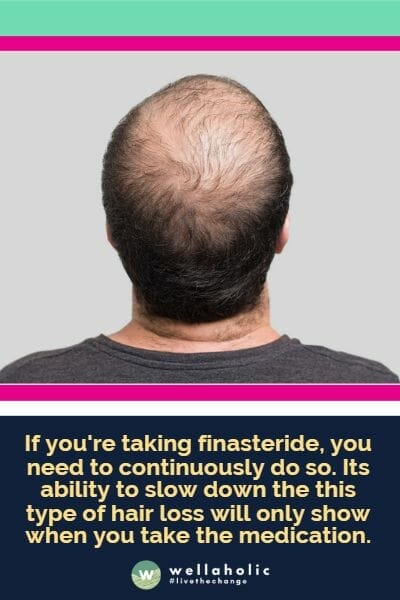
Treating Androgenetic Alopecia
1. Finasteride (Propecia, Proscar)
What is finasteride and how does it help with hair loss?
Finasteride is an oral medication that can slow down the male pattern of hair loss by blocking the male hormone that’s responsible for hair loss. This can only be used in men. Finasteride has been shown to be more effective than minoxidil, another common medication to treat hair loss (we’ll cover that in the next point!)
How should finasteride be taken and what are the expected results?
If you’re taking finasteride, you need to continuously do so. Its ability to slow down the this type of hair loss will only show when you take the medication. Most of the time, it takes three months to a year before you can see results. If not, you should speak to your doctor before you stop taking the medication.
What are the side effects and risks of finasteride?
The side effects of finasteride include itching, rash, hives, breast tenderness, breast growth, swelling of the face or lips, as well as depression. In rare cases, the effects of finasteride can cause breast cancer too. One of the other side effects of finasteride actually affects the prostate-specific antigen (PSA) tests used to screen for prostate cancer, leading to increased risk of undetected prostate cancer.
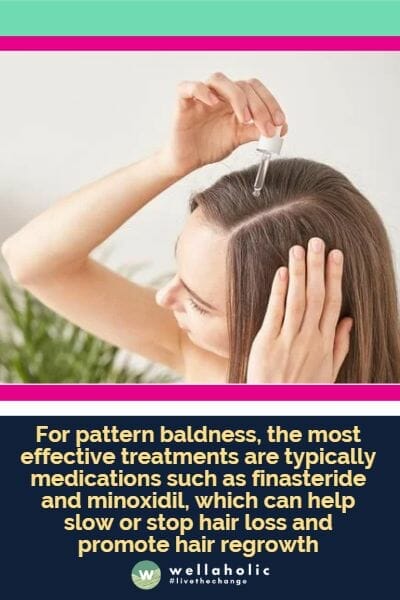
2. Minoxidil
What is minoxidil and how does it help with hair loss?
Minoxidil, or Rogaine, is a very common type of hair regrowth treatment, one of the more effective treatments too. (Psst, we use it for our Microneedling for Scalp treatments) This is a topical medication that you can apply on your scalp, and it slows hair loss while stimulates the hair follicles to grow new hair.
How should minoxidil be applied and what are the expected results?
Minoxidil usually comes in a liquid or foam form that you can apply to your scalp twice a day. It usually takes four months to a year to see visible results. Like finasteride, your hair loss returns when you stop applying minoxidil.
What are the side effects and risks of minoxidil?
The possible side effects are irritation, dryness, a burning sensation, as well as the scaling of the scalp. These are usually mild and temporary.
There are more serious side effects as well, and you have to see the doctor if you experience weight gain, swelling of your face, hands, ankles, or abdomen, rapid heartbeats, chest pain, trouble breathing when your lie down, and laboured breathing. These could be signs of an allergic reaction or a heart problem.
Hair transplant surgery is a popular treatment option for hair loss among Asians. One study compiled by Wellaholic found that the number of hair transplant surgeries performed in Korea increased by 5.5-fold between 2008 and 2012.

3. Hair Transplants
What is a hair transplant and how does it help with hair loss?
A hair transplant is a surgical procedure that involves moving hair from one part of the scalp to another. It is used to treat hair loss by filling in the thinning or balding areas with natural-looking healthy hair. It is one of the most expensive and invasive hair loss treatments available.
How is a hair transplant done and what are the expected results?
A hair transplant is done by a trained surgeon who removes hair follicles from a donor area, usually the back or sides of the scalp, and implants them into the recipient area, usually the front or top of the scalp.
The procedure can take several hours and may require local or general anesthesia. The results are permanent, but may take several months to become noticeable.
What are the risks and complications of a hair transplant?
A hair transplant can cause scarring, infection, bleeding, swelling, pain, and numbness on the scalp. It can also cause shock loss, which is the temporary shedding of some of the transplanted or existing hairs.
Some people may need multiple hair transplants to achieve their desired results. A hair transplant is not suitable for everyone and may have different outcomes depending on the individual’s hair type, color, density, and extent of hair loss.
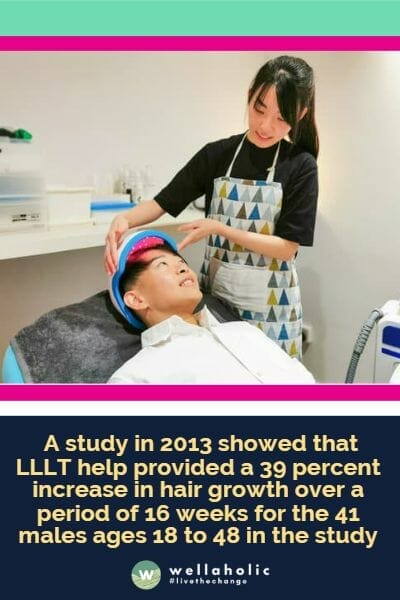
4. Low-Level Laser Therapy (LLLT)
What is LLLT and how does it help with hair loss?
LLLT stands for low-level laser therapy, a modern non-surgical hair loss treatment. It’s touted as one of the safer alternatives, because it’s non-invasive, painless, and has little to no side effects. There’s a 2014 study that showed that LLLT appeared to be safe and effective for hair growth in both men and women. And a study in 2013 showed that LLLT helped provide a 39 percent increase in hair growth over a period of 16 weeks for the 41 males ages 18 to 48 in the study.
How does LLLT work and what are the devices used?
The low-level laser usually emits from devices with diodes installed, and the devices can be in the form of salon hoods, overhead panels, bonnet or head caps, or other hand-held devices. This FDA-approved laser treatment works by using laser light to stimulate cell growth by stimulating circulation around the hair follicles for hair growth.
What is the experience of LLLT like at Wellaholic?
To give you a better idea of what’s it like, let’s dive into Wellaholic’s very own LLLT treatment. Our friendly consultants will check for the areas of hair loss and make note of it. Then those areas are cleaned and disinfected with a little alcohol. If you opted for our signature HairGrow™ regime (highly recommended), the consultant will assist with the Microneedling for Scalp treatment first to maximise your hair growth.
Our consultant will then place the LLLT helmet. It only takes 20 minutes, which is perfect for a quick episode of the Netflix comedy you’re chasing. After it’s all done, our consultant will keep track of your hair regrowth too!
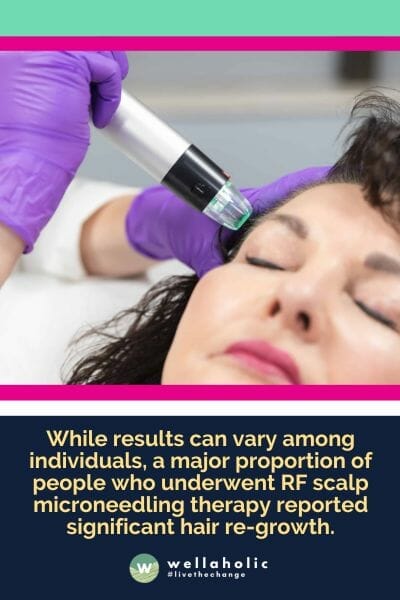
5. Microneedling
Microneedling for Scalp: A New Way to Treat Hair Loss
Yes, you heard that right. Microneedling isn’t just for doing facial treatments. You can also use it to stimulate hair growth on your scalp.
How Microneedling for Scalp Works
Microneedling for hair loss works by causing controlled ‘injuries’ on your scalp. Don’t panic! It won’t leave with you with a permanent scar on your scalp. At the most, you’ll just experience some minor bleeding and a little redness on your scalp. These tiny wounds trigger your body’s natural healing process and stimulate collagen production in the scalp. Collagen is essential for healthy hair growth, as it strengthens the hair follicles and prevents hair thinning.
Microneedling for Scalp with Minoxidil
At Wellaholic, we combine Microneedling for Scalp with a topical 5% Minoxidil solution to compound the hair regrowth capabilities of the two hair loss treatments. Minoxidil is a clinically proven medication that can help prevent hair loss and promote hair growth by increasing blood flow to the scalp and extending the growth phase of the hair cycle.
By applying Minoxidil after Microneedling, you can enhance its absorption and effectiveness. And you can see the lush hair growth over a 12-week period. Wellaholic’s Microneedling for Scalp has proven to be especially effective for customers with androgenetic alopecia.
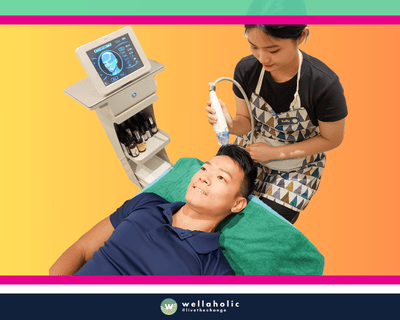
Wellaholic’s Professional Observations (From Our Customers)
In our personal experience with customers at Wellaholic, we have observed a few interesting points about treating male pattern baldness:
- Combination therapy often yields the best results. While individual treatments like finasteride, minoxidil, or LLLT can be effective on their own, we’ve seen the most impressive hair regrowth in customers who combine multiple modalities. For example, using oral finasteride along with topical minoxidil and regular LLLT sessions seems to provide a synergistic effect for many of our clients.
- Consistency and patience are key. Hair regrowth is a slow process, and it can take several months of diligent treatment before noticeable results appear. We always emphasize to our customers that they need to stick with their regimen consistently and have realistic expectations about the timeline for improvement. Those who are patient and persistent tend to be the most satisfied with their outcomes.
- Microneedling has been a game-changer for many. Since we started offering microneedling for the scalp in combination with minoxidil, we’ve seen a significant proportion of customers responding very positively. The micro-injuries from the needling seem to really enhance the absorption and effectiveness of the topical medication. For some, it has made the difference between lackluster results and truly impressive regrowth.
- Early intervention makes a big difference. The customers who start treatment at the first signs of hair loss or thinning almost always have better outcomes than those who wait until their hair loss is more advanced. Preserving the hair follicles early in the process seems to be much easier than trying to revive them after years of dormancy. We now really try to educate people about the importance of acting quickly when they notice hair loss.
Overall, while male pattern baldness remains a challenging condition to treat, the expanding array of options and our growing experience in combining therapies has enabled us to help more and more customers achieve their hair restoration goals. As always, a personalized approach that takes into account each individual’s unique hair loss situation is essential for optimal results.
Frequently Asked Questions (FAQ)
Q1: What is male pattern baldness?
Male pattern baldness, also known as androgenetic alopecia, is the most common form of hair loss in men. It’s a genetic condition that causes hair follicles to gradually shrink over time, leading to shorter, finer hairs and eventual baldness in a characteristic pattern – a receding hairline and thinning on the crown of the head. The condition is caused by a combination of hormones called androgens, particularly dihydrotestosterone (DHT), and genetic factors inherited from both sides of the family. While there’s no cure, treatments like finasteride and minoxidil can help slow down hair loss and even stimulate some regrowth in many cases.
Q2: What causes male pattern baldness?
A2: Male pattern baldness is primarily caused by genetics and hormonal factors. It is often inherited from family members and is associated with the hormone dihydrotestosterone (DHT).
Q3: What treatments are available for male pattern baldness at Wellaholic?
At Wellaholic, we offer several effective treatments for male pattern baldness. Our most popular option is the combination of Microneedling for Scalp with topical 5% Minoxidil solution. This treatment helps stimulate hair follicles and improve hair density. We also provide Low-Level Laser Therapy (LLLT) which uses gentle, low-level lasers to promote hair growth and prevent further hair loss.
Q4: How does LLLT work for male pattern baldness?
At Wellaholic, we’ve seen great results using low-level laser therapy or LLLT to treat male pattern baldness. LLLT uses specific light wavelengths to stimulate hair follicles and prolong the growth phase of hair. The laser light increases blood flow to deliver more nutrients to the follicles. This reverses follicle miniaturization caused by androgens in male pattern baldness. With consistent LLLT treatments, our male clients experience thicker, healthier hair growth in areas of thinning and receding hairlines. While individual results vary, we see visible improvements for most clients after 6-12 months of regular laser helmet use.
Q5: What is PRP therapy, and how does it help with hair loss?
A5: PRP therapy involves using a patient’s own platelet-rich plasma to stimulate hair follicles, encouraging hair regrowth. It’s a natural and effective treatment offered at Wellaholic.
Q6: Are Wellaholic’s treatments safe and effective?
At Wellaholic, safety and effectiveness are our top priorities. With my background in Health Science (Aesthetics) and CIDESCO certifications, I ensure all our treatments use proven technologies and follow strict protocols. Our SHR hair removal is powered by advanced diode laser technology from Alma Lasers. We have over 2000 verified positive reviews from customers who have experienced great results. I personally assess each customer’s unique needs to recommend the most suitable treatments[6]. You can trust Wellaholic to provide safe, high-quality aesthetic services that deliver visible improvements.

Willie Chan, Founder
Willie Chan, a visionary leader and relentless pursuer of excellence, is the Founder and Managing Director of Wellaholic, a renowned aesthetic chain with 8 outlets across Singapore. With a strong belief in evidence-based, effective, and affordable aesthetic treatments, Willie ensures that customers receive the best care possible. His ENTJ Myer-Briggs personality drives him to set clear visions and pursue them without excuses. Willie holds a CIDESCO as well as Beauty Therapy & Salon Management from Brentwood College UK and has studied Operations Management at The Wharton School and Management at Ludwig-Maximilians-Universität München, equipping him with a solid foundation in the business of aesthetics.
Contact Willie at [email protected]
GET IN TOUCH
Book Now Pay Later

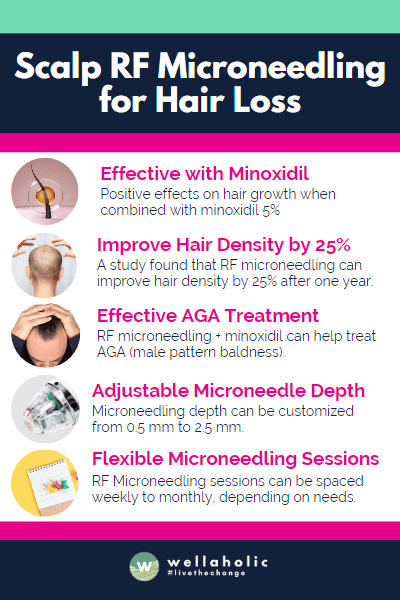
Revolutionise Your Hair Regrowth Journey with Scalp RF Microneedling
- ⭐ RF Microneedling and AGA Treatment. RF microneedling + minoxidil can help treat AGA (male pattern baldness).
- ⭐ Efficacy in Pattern Hair Loss. RF microneedling is effective for hair loss in both men and women.
- ⭐ Study Results on Hair Density Increase. A study found that RF microneedling can improve hair density by 25% after one year.
- ⭐ Adjustable Depth of Microneedling. Microneedling depth can be customized from 0.5 mm to 2.5 mm.
- ⭐ Flexible RF Microneedling Frequency. RF Microneedling sessions can be spaced from weekly to monthly, depending on your needs.
- ⭐ Award-Winning. Wellaholic’s treatments have been recognized by top beauty publications such as Daily Vanity, Beauty Insider, and Tropika Club Magazine.
- ⭐ Over 2000 Verified Customer Reviews. Wellaholic has over 30 industry awards and over 2000 positive reviews from customers, and >50% are repeat customers.
